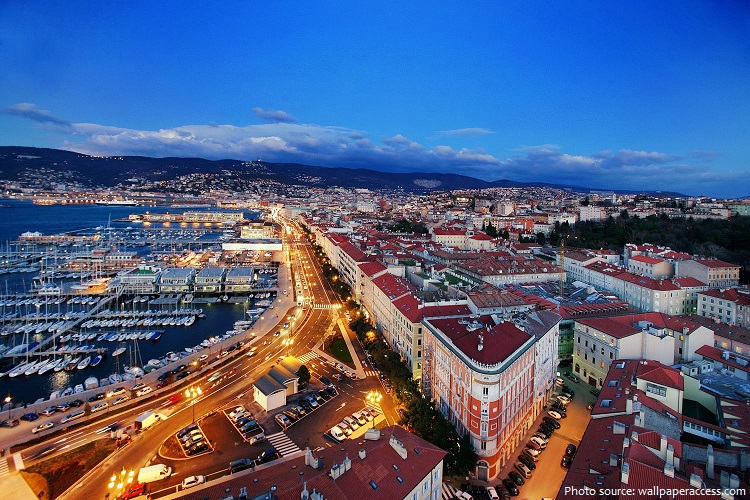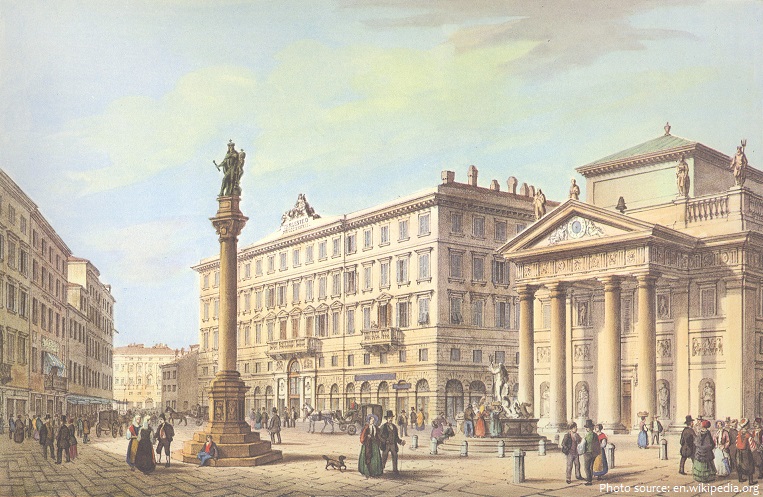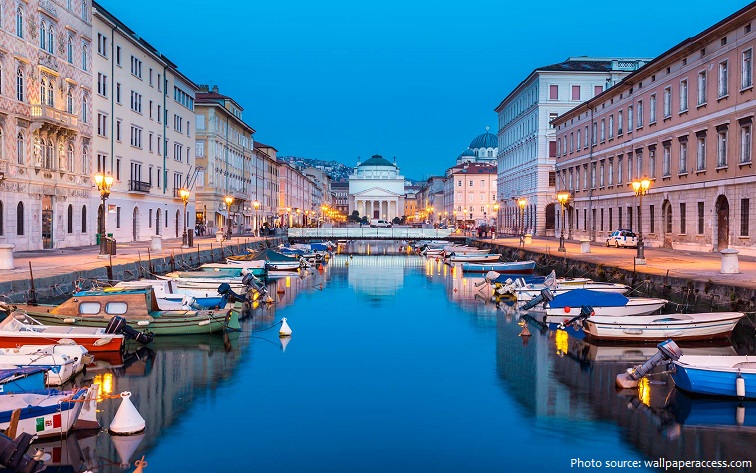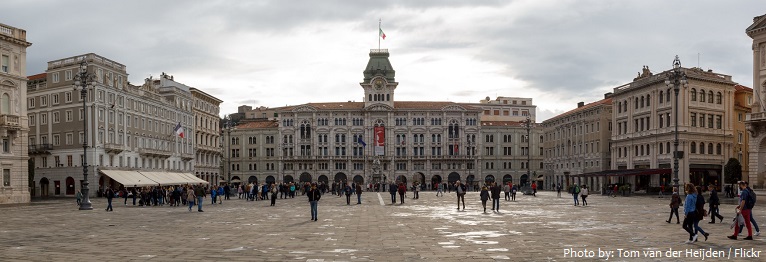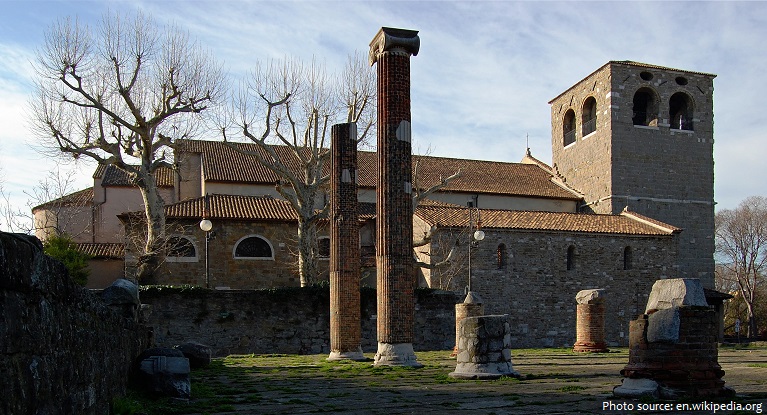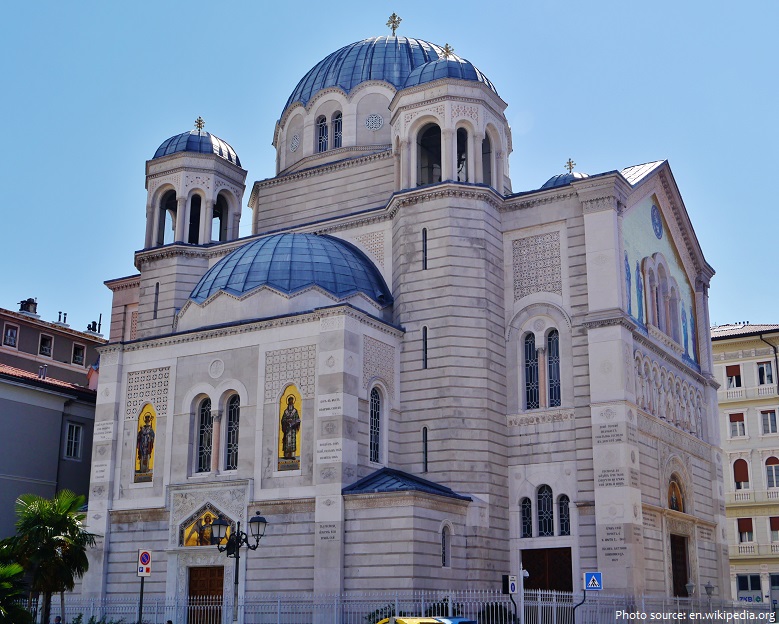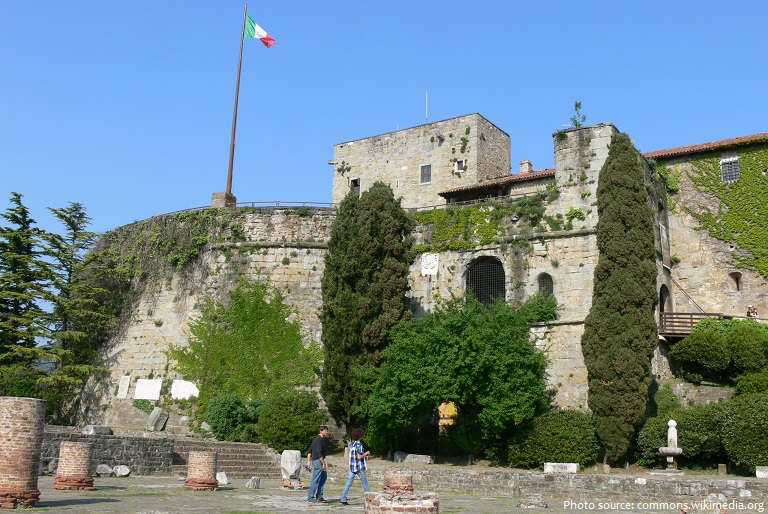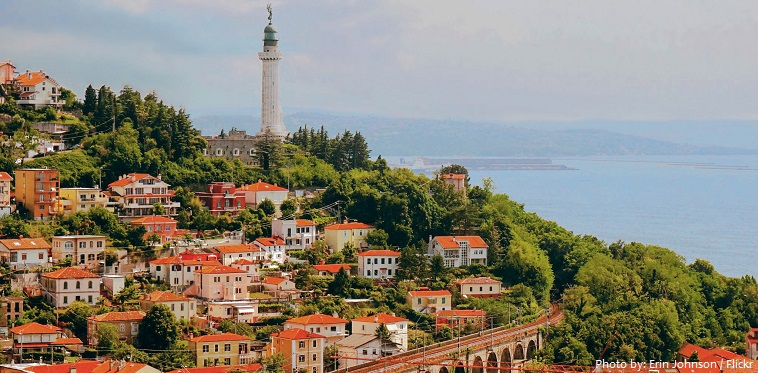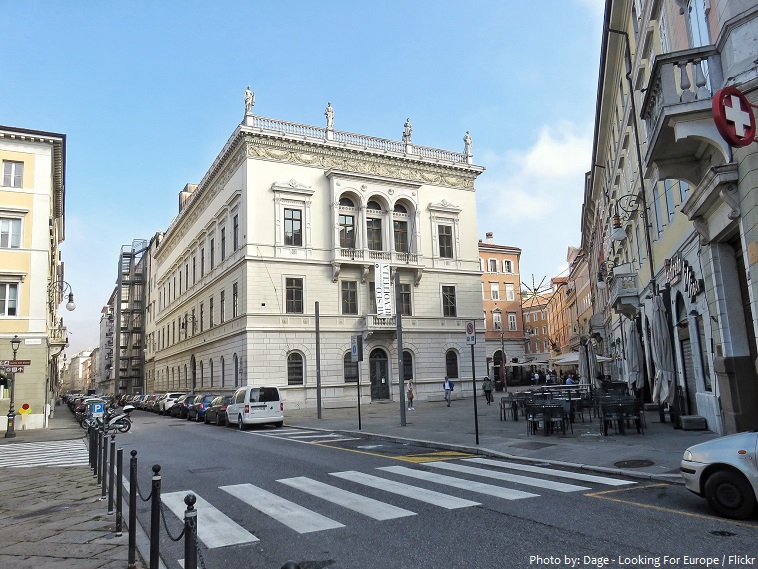Trieste is a city and a seaport in northeastern Italy.
It is situated in the northernmost part of the high Adriatic in northeastern Italy, near the border with Slovenia.
As of September 2020, the population of Trieste is about 210,000 people.
The city covers a total area of 84 square kilometers (33 square miles).
The average altitude is 2 metres (7 feet) above sea level.
The city, which lies at the intersection of Latin, Slavic, Germanic, Greek and Jewish culture, where Central Europe meets the Mediterranean Sea, is considered one of the literary capitals and was often referred to as early New York because of its diverse ethnic groups and religious communities.
The history of Trieste began with the formation of a town of modest size in pre-Roman times, which became an actual city only after Roman conquest in the second century BC and subsequent colonisation.
After the imperial era, the city declined following barbarian invasions, becoming only marginally important for the next millennium.
It changed lordships several times and then became a free city, which joined the House of Habsburg in 1382.
Trieste was one of the oldest parts of the Habsburg Monarchy, belonging to it from 1382 until 1918.
In the 19th century the monarchy was one of the Great Powers of Europe and Trieste was its most important seaport. As a prosperous seaport in the Mediterranean region, Trieste became the fourth largest city of the Austro-Hungarian Empire (after Vienna, Budapest, and Prague).
The cosmopolitan city, which in the Habsburg period remained Italian-speaking and rose to become a leading Italian and European cultural center, was incorporated into the Kingdom of Italy in 1918 following the First World War.
Trieste was seized in 1943 by the Germans, who intended to maintain it as a southern outlet to the sea for the Third Reich. As the war reached its final weeks, Marshal Tito’s Partisans closed in from the east – the Allies also raced to liberate the city.
After the Second World War it was the capital of the Free Territory of Trieste, staying for nine years under Allied Military administration.
Following the 1954 London Memorandum, Trieste was annexed by Italy.
Since 1963 it has been the capital of the Friuli-Venezia Giulia.
Today, Trieste is a proud mix of cultures and architectural styles.
Piazza Unità d’Italia is the main square in Trieste. It is often said to be Europe’s largest square located next to the sea. The square was built during the period when Trieste was the most important seaport of the Austrian-Hungarian Empire and includes the city’s municipal buildings and other important palaces.
Trieste Cathedral, dedicated to Saint Justus, is a Roman Catholic cathedral and the main church of Trieste, in northern Italy. The current appearance of the basilica derives from the unification of two previous churches which were incorporated under one roof between the years 1302 and 1320. In 1899, Pope Leo XIII granted it the status of a basilica minor. Trieste Cathedral is the seat of the Bishop of Trieste.
The Church of Sant’Antonio Taumaturgo commonly known as the Church of Sant’Antonio Nuovo, is the main religious building in the Borgo Teresiano in the centre of Trieste as well as the city’s largest Catholic church. The building project dates back to 1808, but work only began in 1825. The church has a facade of ionic columns with six statues sculpted by Francesco Bosa in 1842, representing Saint Justus, Saints Sergius and Bacchus, Saint Servulus, Saint Maurus, Saint Euphemia and Saint Tecla.
Saint Spyridon Church is a Serbian Orthodox church in Trieste. The Orthodox community in Trieste was established in 1748 but it wasn’t until 1751 when Empress Maria Theresa allowed free practice of religion for Orthodox Christians. The first Eastern Orthodox Church was built in mid XVIII century and it served as a place of worship for local Serbs and Greeks both. Due to the instability of the grounds on which the first church was erected, a join decision was made to demolish the existing one and to erect the second church. The construction began in 1861 and finished in 1868.
Located in the heart of Trieste is the ancient Teatro Romano. Dating back to the 1st Century AD it was built by Quintus Petronius Modestus, a statesman during the reign of Emperor Trajan. The theatre could accommodate up to 3,500 spectators, and was built almost entirely of masonry, except for the stage, which was made of wood.
The Castle of San Giusto stands on the hill overlooking the city of Trieste. In 1382 the town came under the control of the Austrian Empire, following which the Imperial court ordered the construction of a fortress to protect the town and provide accommodation for its Captain. The building work lasted from 1468 to 1636. The Austrian Imperial Captains resided in the castle until 1750, when it was converted for use as a garrison and a prison. It was thoroughly renovated and converted into a museum in 1936, since when it has stood as a symbol of the city.
Vittoria Light also known as the Victory Lighthouse, is an active lighthouse in Trieste, serving the Gulf of Trieste. At a height of 68 meters (223 feet) it is one of the tallest lighthouses in the world. The structure celebrates the Italian victory and commemorates the fallen of the first world war, as testified by the inscription “SPLENDI E RICORDA I CADUTI SUL MARE MCMXV-MCMXVIII” (shine and remind of the fallen on sea 1915-1918).
Risiera di San Sabba is a five-storey brick-built compound located in Trieste, that functioned during World War II as a Nazi concentration camp for the detention and killing of political prisoners, and a transit camp for Jews, most of whom were then deported to Auschwitz.
The Revoltella Museum is a modern art gallery founded in Trieste in 1872 by Baron Pasquale Revoltella. The baron, after he left his house to the city and all the works, furniture and books it contained. The museum today is composed of three buildings with a total exhibition area of 4,000 square meters (43,000 square feet).
Trieste has a lively cultural scene with various theatres.
The local calcio (football) club in Trieste is Triestina, one of the oldest clubs in Italy.
Trieste has one of the highest living standards among Italian cities.
Today, the port of Trieste is one of the largest Italian ports and next to Gioia Tauro the only deep water port in the central Mediterranean for seventh generation container ships.
Slovenia is approximately 10–15 km (6-9 mi) south and east of the city.
Croatia is some 30 km (19 mi) to the south.

